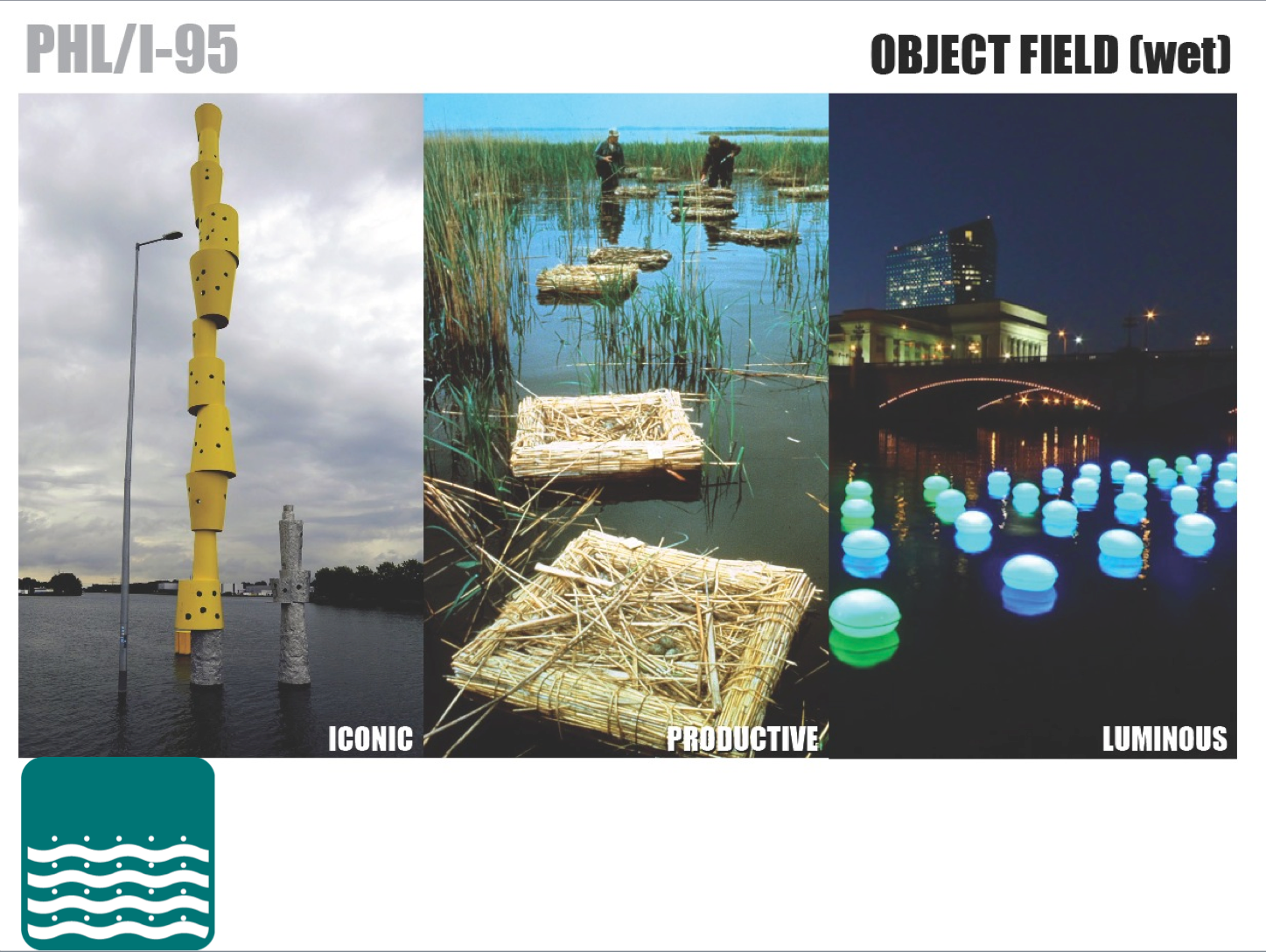PHS looks to seven sites as next generation civic landscapes

Imagine seeing a landform sculpture or a sea of patterned plantings from the sky as you come in to land at Philadelphia International Airport, intstead of the tangle of asphalt and concrete in a gritty industrial setting that currently serves as the city’s welcome mat. Or wildly painted crosswalks lined with artistic street furniture and light sculptures that draw you into the Centennial District along West Girard Avenue.
These could be among the new crop of civic landscape projects taken on by the Pennsylvania Horticultural Society (PHS) and a host of partners in the coming years.
In recent decades PHS has developed landscape approaches to improve high-profile places like the Azalea Garden and Logan Square, as well as less show-stopping locations like the medians along Columbus Boulevard. And as PHS looks ahead to their 200th birthday (coming in 2027) they’re on the hunt for what places should be next.
For the last year and a half, PHS worked with PennPraxis* and more than 100 key stakeholders to zero in on which sites in Philadelphia are most worthy of their focused attention alongside community and civic partners.
The more conversations PHS had, the longer the list of possible sites became, “but at the same time we found that there were certain ones that would come up in just about every conversation,” said Jeff Barg, PHS’ Senior Manager of Urban Planning and Policy.
These seven sites rose to the top:
- North Broad (Diamond St. to Spring Garden St.)
- Central Broad (Spring Garden St. to South St)
- South Broad (South St. to Passyunk Ave.)
- Vine Street (Benjamin Franklin Bridge/5th St. to 20th St.)
- Northeast Corridor (Amtrak/SEPTA rail corridor through North Philadelphia)
- West Girard Avenue (29th St. to 41st St.)
- Airport (PHL/ I-95)
Each one of these sites could include multiple projects at a variety of scales; some might focus more on making a positive impression (“image-makers”), fostering a sense of place (“place-makers”), or improving neighborhood connections and quality of life (“partner-makers”).
“These seven sites… represent different scales of intervention. The airport or the Northeast Corridor are really regional gateways and they’re big image-makers in the scheme of things, whereas some of the Broad Street work that’s proposed is more of a place-maker,” explained Nancy Goldenberg, PHS’ Senior Vice President for Programs and Planning.
Goldenberg said that PHS will be looking to projects that communities and partner organizations are already considering, and determining “where PHS involvement can add value and actually make them happen. And there are some [projects] we’d like to put on the table as well,” Goldenberg said.
PHS has several tools in mind to help improve these spaces, including signage, surface textures, land or aquatic forms, furniture, landscape screening techniques, vertical or horizontal plantings, lighting, and artistic installations (plant or otherwise).
And while these seven sites and possible interventions were identified, the actual projects (and how they will be paid for) are still very much a work in progress.
Here’s an example of the kinds of interventions PHS could envision at the airport site:
Big projects around the airport or Northeast Corridor have the potential to be shape the immediate impressions of visitors through “grand civic statments,” Barg explained. But, he added, designing for Philadelphians is a core goal of this initiative.
“We need to design a great city for Philadelphians, then others will come here and see what a great place it is,” he said, pointing to work PHS has been involved with on the Parkway as an example of that approach.
PHS says the door is open for the public to suggest the kinds of improvements it hopes to see.
PHS has been in conversation with OpenPlans to develop a tool for public engagement around the civic landscapes initiative, Barg said. It’s still early yet, but this digital tool could be a way to solicit feedback for specific projects or crowd-source project ideas, all the while encouraging the public to consider the impact of investment in public places.
For now, PHS has started to spread the word about this next generation of civic landscapes at the Flower Show and in a brochure shared at Friday’s Civic Horticulture Conference. And in the coming months, Goldenberg explained PHS will continue its conversations with agencies and organizations “to identify projects and partners so that we can fully launch in the fall.”
* PlanPhilly is a project of PennPraxis.
WHYY is your source for fact-based, in-depth journalism and information. As a nonprofit organization, we rely on financial support from readers like you. Please give today.












